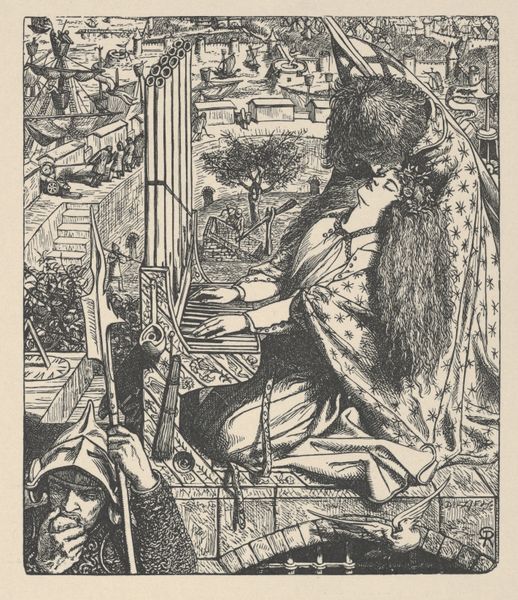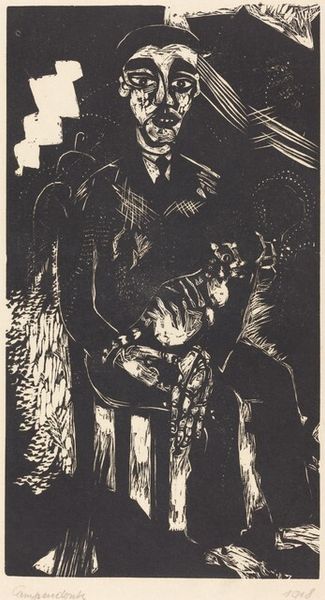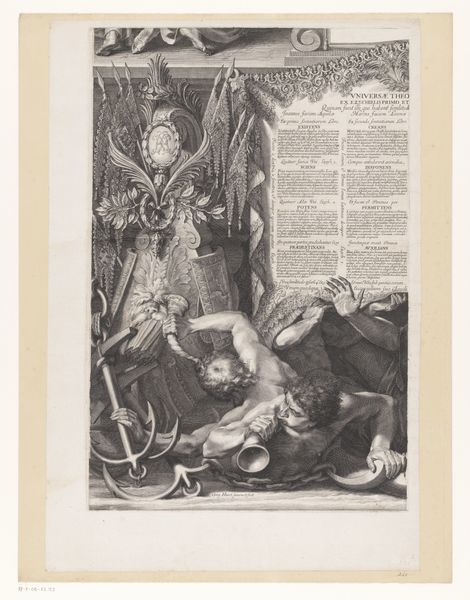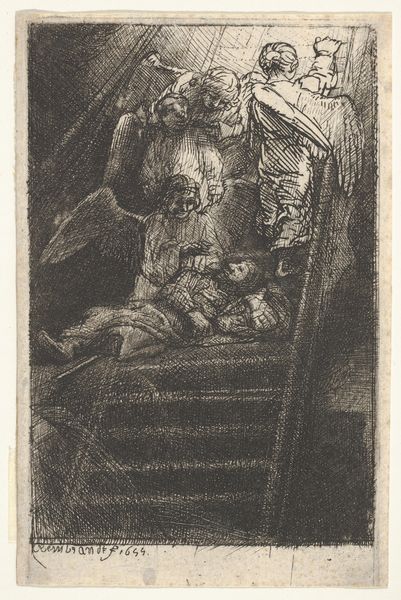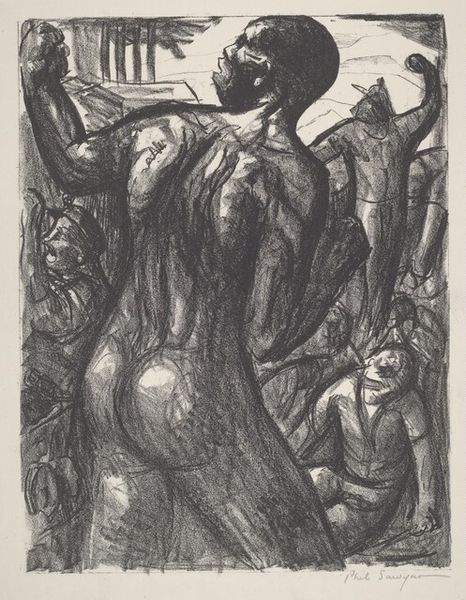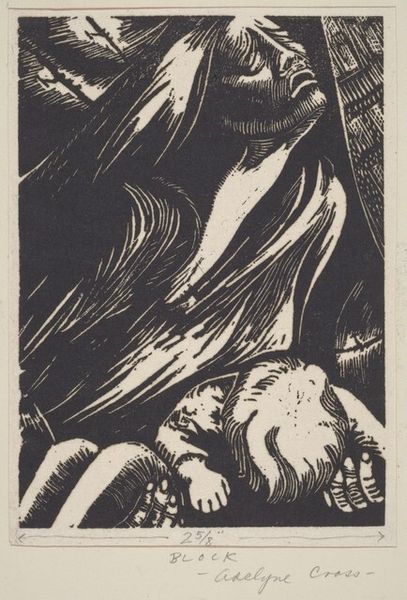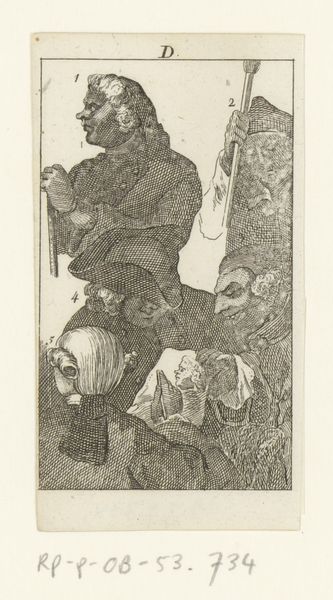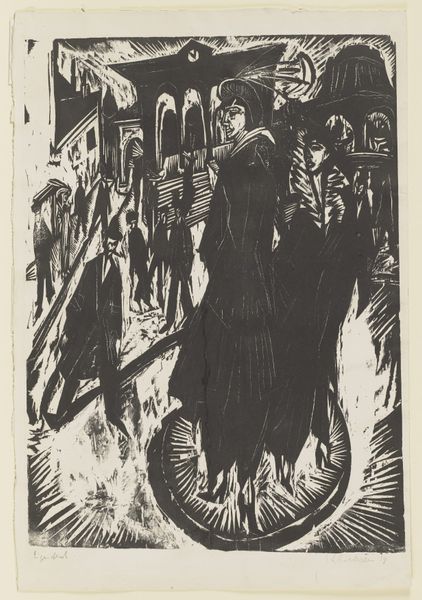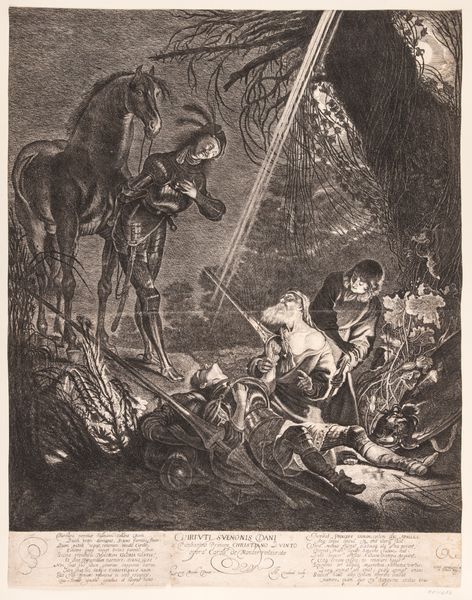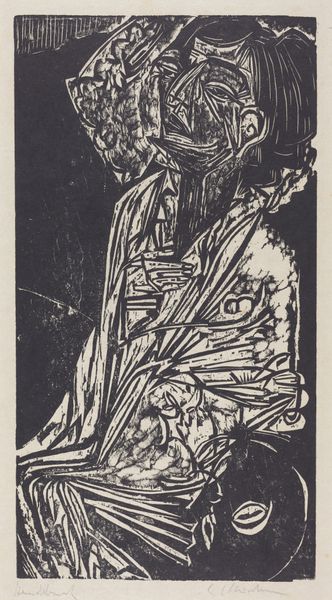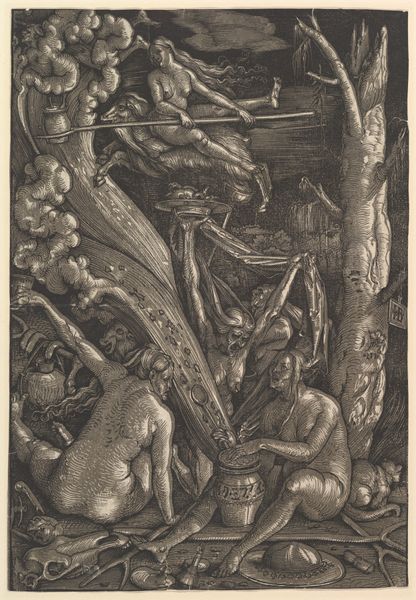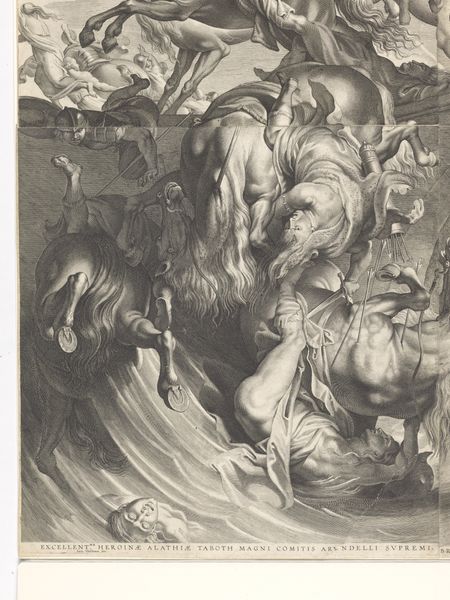
The Lady of Shalott (from Tennyson's Poems, New York, 1903) 1857 - 1903
0:00
0:00
drawing, print, woodcut
#
drawing
#
narrative-art
# print
#
figuration
#
woodcut
#
history-painting
#
pre-raphaelites
Dimensions: Image: 3 11/16 × 3 1/8 in. (9.3 × 8 cm) Sheet: 8 1/16 × 6 3/16 in. (20.4 × 15.7 cm)
Copyright: Public Domain
Curator: This print, "The Lady of Shalott," by Dante Gabriel Rossetti, was completed between 1857 and 1903. It is presently housed at the Metropolitan Museum of Art. It's a woodcut and drawing illustrating Tennyson's poem. Editor: What strikes me immediately is its density. The composition is so compressed; the stark black-and-white contrasts add to the feeling of claustrophobia, almost as if the viewer is trapped within the weaving itself. Curator: It's fascinating how Rossetti interpreted Tennyson's poem. The Lady, confined to her tower by a curse, is only allowed to view the world through a mirror and weave what she sees. When she looks directly at Lancelot, the mirror cracks, and the curse is activated. Rossetti captures her tragic moment of defiance and its dire consequences. It's such a powerful statement about female agency and the cost of transgression within a patriarchal structure. Editor: Looking closely, you can see how he plays with the line. Note how the warp and weft of the loom behind the Lady and Lancelot act as a graphic device, implying how she's trapped between the figures, but also weaving a parallel of light and darkness as Lancelot looks down on the Lady. Rossetti captures movement and action on an object designed for stillness and domestic labour, and that says a lot! Curator: Absolutely, and the other figures in the background, possibly other knights, act as silent judges or witnesses, enforcing the social norms that condemn the Lady. And if you look, snakes appear under her, so it's worth noting what type of hell they represented for the feminine sphere in the 19th century! It's a chilling vision of the Victorian repression of female sexuality and desire. Editor: I also can't help but focus on the stark materiality, the raw cuts of the wood, especially around the edges. It reinforces this sensation of unease and unfinished destiny. It is incredibly evocative and tactile. Curator: Understanding its context within the Pre-Raphaelite movement is crucial. They rejected the academic art of their time, looking back to the art of the late Middle Ages and early Renaissance for inspiration, emphasizing intense colors, detailed realism, and morally charged subjects. Editor: Rossetti's woodcut beautifully translates the drama and darkness into pure visual language. It truly shows that one doesn't need colour to convey a story filled with darkness, desire, passion and loss. Curator: I think exploring this image is a haunting examination of the constraints placed upon women and their struggles to find their own voices and identities within the prevailing norms of Victorian society. Editor: And it showcases Rossetti’s unique visual language, in its commitment to line, composition, and conveying powerful emotional impact, particularly the themes of repression and its physical confinement.
Comments
No comments
Be the first to comment and join the conversation on the ultimate creative platform.
